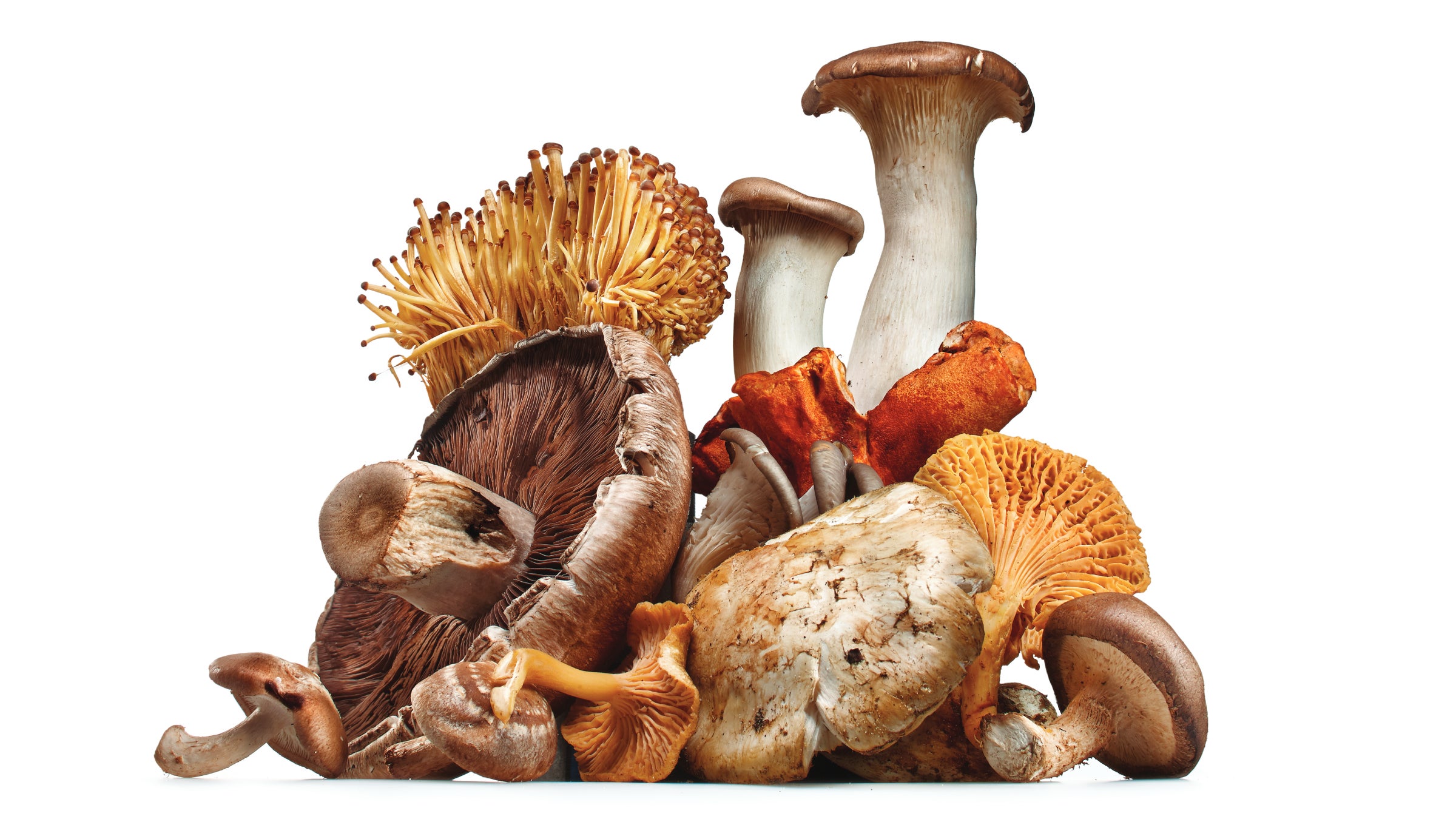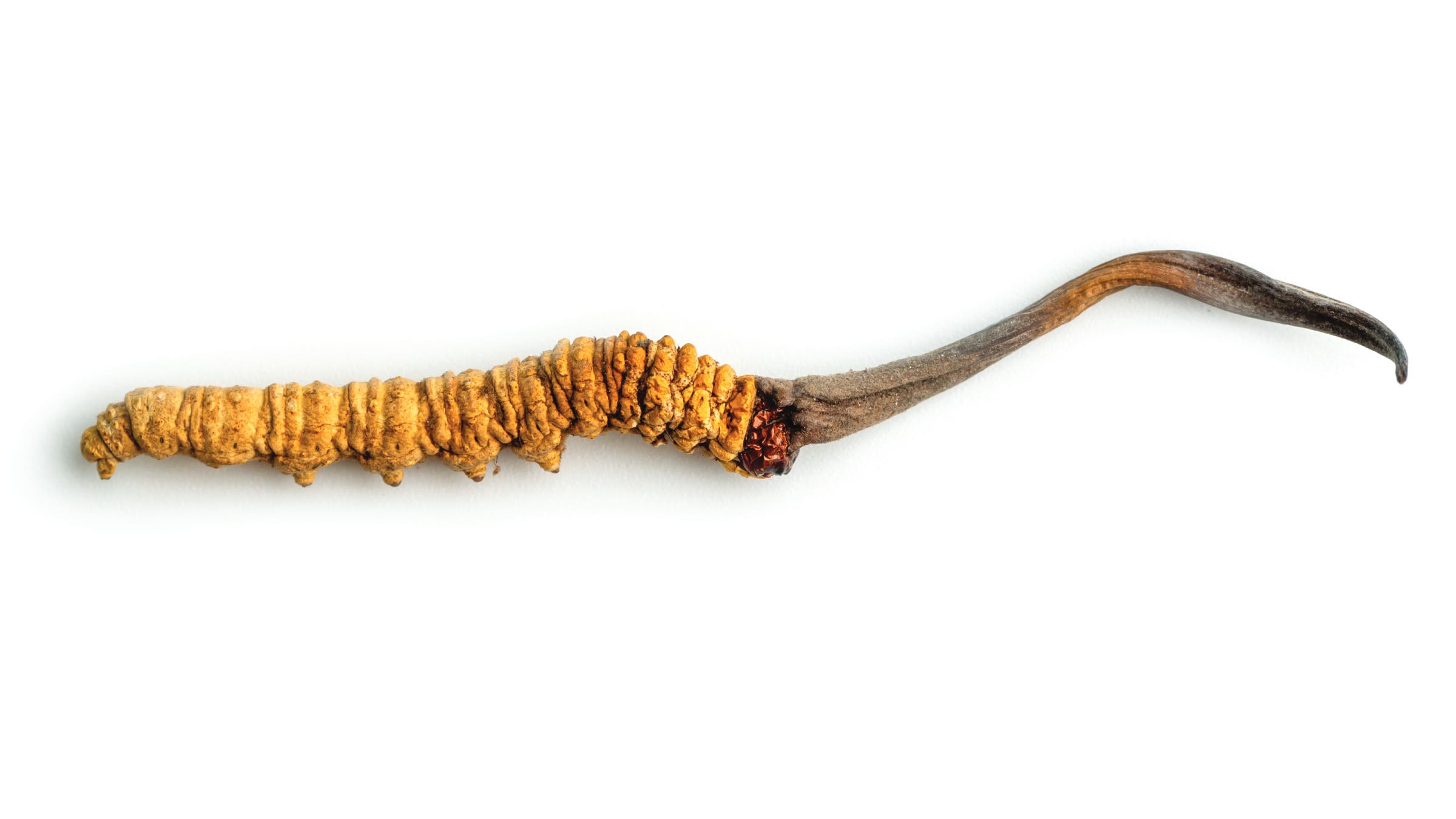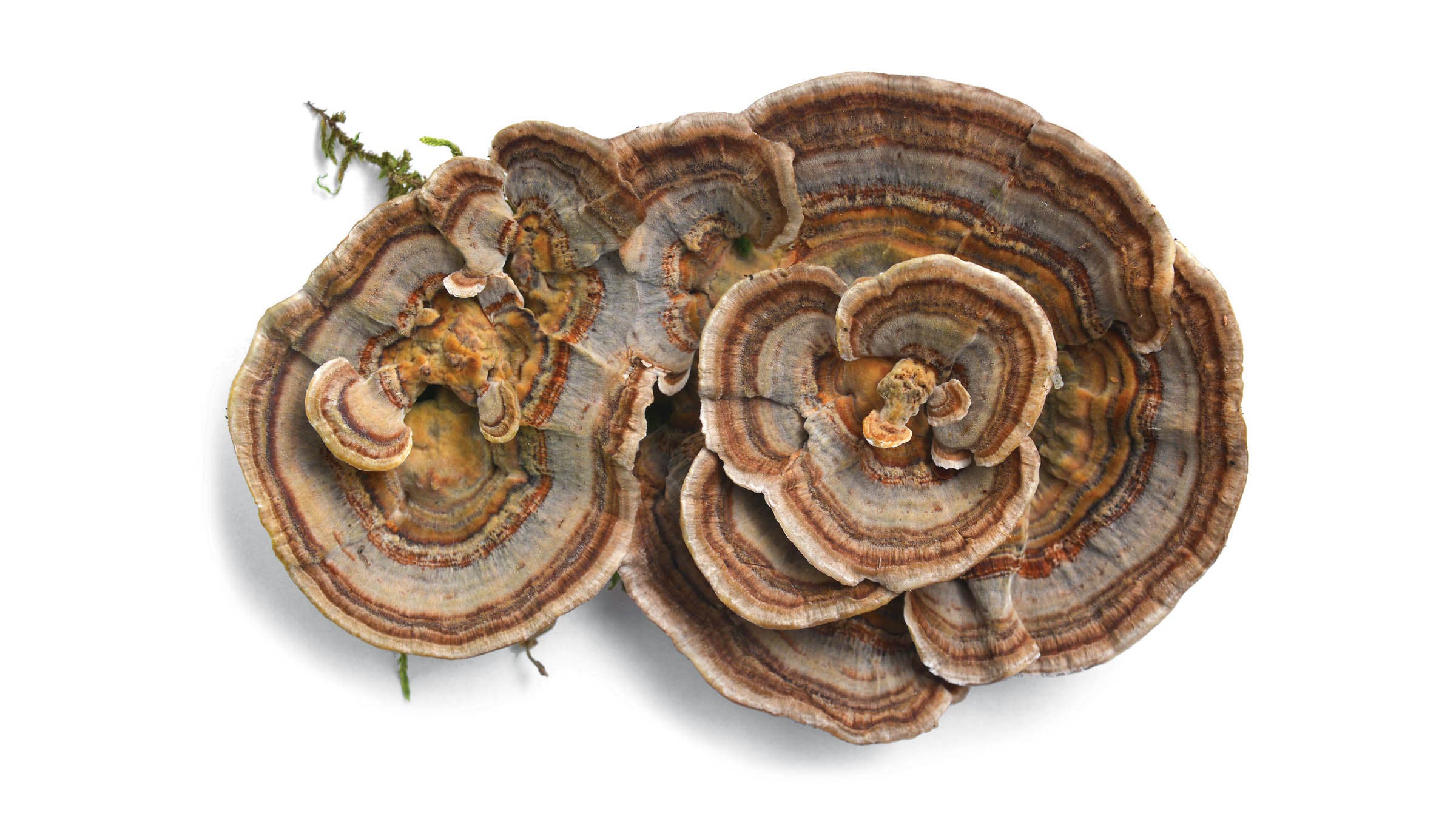Mushrooms and Athletic Performance: Everything You Need to Know

(Photo: Getty Images)
In August 1993, the Chinese women’s team dominated the long-distance running event at the world track and field championships in Germany, obliterating three world records and sweeping the podium in the 3,000 meters. Of course, the anti-doping powers-that-be immediately demanded urine samples, but they all came back negative for banned substances. What was their winning secret? According to the Chinese team coach Ma Junren, his athletes regularly enjoyed an elixir of caterpillar fungus and soft-shell turtle soup.
Once the world stopped gagging, they became curious — turtle soup aside, what exactly is caterpillar fungus? Before we take that deep dive into the intricacies of Chinese medicine, let’s rewind a little.

Fungi Facts
Mushrooms are fungi, which by their very nature function to decompose matter. And while we might colloquially recognize mushrooms as a vegetable, fungi actually stand in a kingdom all their own. “There’s more DNA similarity between mushrooms and mammals than between mushrooms and plant life,” says Sandra Carter, Ph.D., founder of Om Mushroom Superfood. “Mushrooms exhale carbon dioxide and inhale oxygen, they have a sexual reproduction cycle and they sort of ‘read the room’ as you’re ingesting them.” In this way, mushrooms are a top adaptogen, a substance that can help the body “adapt to” and handle stressors.
While there are zillions of species of mushrooms, they are colloquially divided into four main types: culinary, medicinal, psychedelic and poisonous.
Culinary Mushrooms
Nine varieties — white button, cremini, portabella, shiitake, oyster, enoki, beech, maitake and royal trumpet (as well as seasonal varieties such as morel and porcini) — make up the majority of mushrooms consumed by people. All mushrooms are a rich source of B vitamins, copper and potassium, and they are distinctive among plant-based foods because of their ability to add meat-like umami flavor to dishes.
One nutrient is especially exclusive to mushrooms: vitamin D. Mushrooms are the only natural source of vitamin D in the produce aisle and, like us, they have the unique ability to actually create more vitamin D when exposed to UV light or the sun.
You can actually increase the amount of vitamin D in store-bought mushrooms, according to Pam Smith. Simply slice mushrooms or remove the stems and place the caps gill-side up on a metal rack over a sheet pan. Place them in direct sunlight between 10 a.m. and 3 p.m. for up to three days. You’ll boost the Recommended Daily Allowance of cremini mushrooms to 128 percent!
Medicinal Mushrooms
Medicinal (aka functional) mushrooms have been linked to a number of benefits, including turbo-charged immunity, improved aerobic capacity, reduced fatigue, balanced mood and clearer thinking. Varieties such as cordyceps, reishi, chaga, turkey tail, lion’s mane and maitake are becoming mainstream, and there’s no lack of ways to incorporate them into your life. A few, such as maitake and shiitake, cross over between culinary and functional use, but most functional mushrooms do not taste good or aren’t appropriate to eat.
“It has to do with texture and density,” says Chris Kilham, a plant-medicine educator and author of 15 books on botanicals, including The Ayahuasca Test Pilots Handbook: The Essential Guide to Ayahuasca Journeying (North Atlantic Books, 2014). “Shiitake mushrooms happen to taste good, for instance, whereas turkey tail mushrooms are like chewing cardboard.”
For ease of ingestion, functional mushrooms are heated and pulverized to break down their tough cellular walls and render some of their nutrients more bioavailable. Then they are made into pills, powders, extracts, coffees, teas, broths, chocolates and more. “I believe in strategic eating to ensure your body is operative from a point of strength, so a functional food like mushrooms makes a lot of sense for athletes,” says Pam Smith, RD, chair of the Culinary Institute of America’s Healthy Menus R&D Collaborative and former nutritionist for the Orlando Magic. “If you’re already drinking coffee, why not drink mushroom coffee? If you’re looking into bone broth, why not drink [functional] mushroom broth?”
According to Carter, most studies done on functional mushrooms show benefits at 2 grams (1 teaspoon) of powder or capsules per day, and a double or triple dose of 4 to 6 grams per day (2 to 3 teaspoons) for the first few weeks can accelerate the benefits.
Creepy Crawly Cordyceps
Now, about those caterpillars: The fungus in question is Cordyceps sinensis, one of the most valued ingredients in traditional Chinese medicine. Proponents believe it can improve focus, reduce sickness and boost sex drive, and yes, it does indeed grow out of a caterpillar: The fungus parasitizes a species of burrowing moth larvae with spores. The caterpillars then crawl to the surface of the earth and die, and bright orange matchstick-length mushrooms sprout from their heads.
Cordyceps sinensis is now considered an endangered species because of overharvesting and climate change, but while the wild variety is expensive and hard to find, the commercially cultivated species, Cordyceps militaris, is biologically similar — and doesn’t require mass caterpillar murder to propagate. Of the 400-plus species of Cordyceps fungi identified, Cordyceps sinensis and Cordyceps militaris are the most researched, and both show promising benefits of interest to athletes. Most notably, they have been shown to increase the production of adenosine triphosphate to better supply muscles with energy, and they also can improve the way the body uses oxygen during exercise.
Psychedelic Mushrooms
Though they make up just 1 percent of all known mushroom varieties, psychedelic, aka “magic,” mushrooms cause the most controversy because of their ability to alter mood and perception with a hallucinogenic effect. “The [psychoactive] ingredient in magic mushrooms attaches to the same receptors in the brain as serotonin because of their similar chemical structure,” Kilham says.
In recent years, controlled delivery of tiny amounts of psilocybin and psilocin (the psychotropic tryptamines found in magic mushrooms) called “micro-dosing” is drawing attention. “Side effects, such as stomach discomfort or nausea, can accompany eating magic mushrooms whole,” says Natalie Kovach-Anta, MSEd, co-founder and director of education at Decriminalized Nature NYC, a national campaign aimed to educate people on the value of entheogenic plants and fungi. “With micro-dosing, that doesn’t happen because the mushrooms are ground up and the amount taken is so small.” A typical micro-dose is 0.2 to 0.4 grams of psilocybin-containing mushrooms in a concentrated liquid or powdered form.
The extreme sports underground have been using psychedelics for more than 40 years to increase reflex time to lightning speed, improve balance to the point of perfection, increase concentration until you experience ‘tunnel vision,’ and make you impervious to weakness or pain. Source: The Multidisciplinary Association for Psychedelic Studies Newsletter
“Every Decriminalize Nature bill that has gone to a city council vote has passed unanimously once legislators see the science and hear the testimonials,” Kovach-Anta adds. Micro-dosing is currently being studied as a cure for things such as serious depression, post-traumatic stress disorder, alcoholism, anxiety and Alzheimer’s disease. Last year, a first-of-its kind research center opened at Johns Hopkins University to explore the use of psychedelic treatments — including magic mushrooms, LSD and MDMA, commonly known as ecstasy — for mental conditions. But others who wish to push their boundaries are dabbling in micro-dosing for nonaddictive pain management, as well as mental and physical acuity.
All this sounds great, but … is it legal? Not really. Psychedelic mushrooms are categorized as a Schedule 1 substance under the federal Controlled Substances Act, meaning it is illegal to manufacture, sell, buy, possess and use them. However, psychedelics do not appear on the World Anti-Doping Agency’s list of banned substances, and the Food and Drug Administration recently gave psilocybin a “breakthrough therapy” designation, allowing it to be used as a treatment in clinical trials.
Now that you’re armed with information, are you ready to enter the fungi forest? Consider venturing in. You might just discover the health or performance boost you’ve been wanting.
Poisonous Mushrooms
There’s an old saying that goes, “Every mushroom is edible but some only once.” Though only 3 percent of known mushroom varieties are poisonous, it’s best to err on the side of caution. Many poisonous varieties look similar to edible ones, so never forage for mushrooms in the wild. They aren’t dangerous to touch, however consuming even a small amount of a poisonous mushroom is toxic to your liver.

The Fungus Amongus
Medicinal mushrooms have many proven benefits. Here are some to consider, along with their well-researched functionalities.
CORDYCEPS have been shown in studies to increase VO2 max (maximum oxygen uptake), suppress inflammation and, according to research published in Alternative Therapies in Health and Medicine, help prevent aging at the cellular level.
CHAGA has been shown to reduce long-term inflammation by preventing the production of cytokines (which trigger an inflammatory reaction), helping combat oxidative stress and slow cellular aging, according to research published in the Journal of Natural Medicines.
LION’S MANE, according to a clinical trial reported in Phytotherapy Research, is connected to the synthesis of nerve growth factor — a neuropeptide that helps regulate growth and maintenance of target neurons and that is important for cognitive and neurological health.
TURKEY TAIL has a very high concentration of beta-glucans, a powerful polysaccharide needed for immune health. And a study published in The Scientific World Journal showed it to be protective against DNA damage.
MAITAKE contains naturally high levels of vitamin D and an array of beta-glucan compounds, which, according to a study in the Journal of Integrated Medicine, are beneficial for immunity and digestive health.
REISHI activated white blood cells in athletes exposed to stressful conditions, according to the British Journal of Sports Medicine. It’s also linked to reduced pain and fatigue and better sleep.

Give ’Shrooms a Chance
According to Nutrition Business Journal, sales of functional mushroom supplements spiked by nearly 40 percent in 2020. Check out some of these awesome products.
- Om Mushroom Superfood offers six varieties of organic functional mushrooms in capsules, powders, drinks and broth mixes.
- Moku makes jerky from king oyster mushrooms. It’s 100 percent plant-based and low in sugar with 4 grams of protein and 7 grams of fiber per serving.
- Laird Superfood infuses medicinal mushrooms into this product line co-founded by surfer Laird Hamilton. Try the dry creamer, hot cocoa or protein powder.